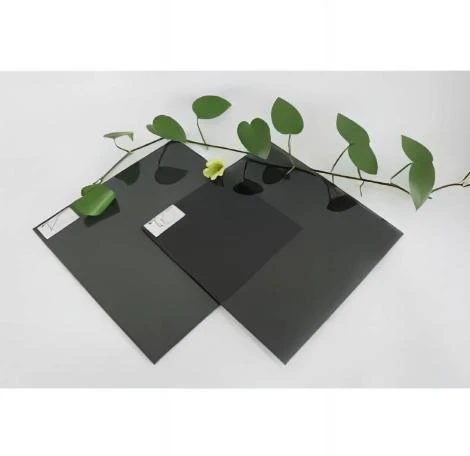The Float Glass Production Line A Comprehensive Overview
The float glass production line is a sophisticated and efficient manufacturing system that enables the creation of high-quality flat glass used in various applications, from windows and doors to mirrors and electronic devices. The process is widely acknowledged for its simplicity and effectiveness. This article delves into the stages of float glass production, its benefits, and its role in the modern manufacturing landscape.
Stage 1 Raw Material Preparation
The first step in the float glass production process involves the careful selection and preparation of raw materials. The primary constituents of float glass include silica sand, soda ash, and limestone. These materials are meticulously sourced and mixed in precise proportions. Additional ingredients may be included to impart specific properties to the glass, such as alumina for strength and colorants for aesthetics. Once the raw materials are adequately blended, they are transported to the furnace for melting.
Stage 2 Melting
The next phase is the melting of the raw materials, which occurs in a high-temperature furnace. The glass batch is heated to temperatures exceeding 1,600 degrees Celsius, where it undergoes a transformation from solid to molten state. During this phase, the glass is continuously stirred and monitored to ensure a uniform melt. This is a critical step, as any impurities or inconsistencies can lead to defects in the final product. The molten glass is then subjected to a process known as fining, where bubbles and other imperfections are eliminated, resulting in a smooth and homogenous glass melt.
Stage 3 Float Process
The hallmark of float glass production is the float process itself. This innovative technique was invented in the 1950s and has since revolutionized the glass industry. Once the glass reaches the desired consistency, it is poured onto a bed of molten tin at precisely controlled temperatures. The inherent properties of glass allow it to float on the tin, creating an even, flat surface. The thickness of the glass is determined by the speed at which it moves along the float line, allowing for customization according to market needs. As the glass floats, it is gradually cooled in a controlled environment, preventing warping and ensuring stability.
float glass production line
Stage 4 Annealing
After the float process, the glass enters the annealing lehr, where it undergoes a gradual cooling process. This step is crucial for relieving internal stresses and achieving the desired mechanical properties. The temperature inside the annealing lehr is precisely controlled, ensuring that the glass cools uniformly to avoid breakage or warping. This process typically takes several hours, with the glass moving through different zones of the lehr at specific rates.
Stage 5 Cutting and Finishing
Once the glass has cooled and solidified, it is cut into sheets of specified dimensions. This is done using advanced cutting machinery that ensures precision and accuracy. The cut glass sheets may undergo additional finishing processes, such as polishing, coating, or tempering, depending on their intended use. For example, tempered glass is subjected to high temperatures and rapid cooling to enhance its strength and safety features.
Benefits of Float Glass Production
The float glass production line offers a myriad of benefits. One of the primary advantages is the high quality of the glass produced, characterized by uniform thickness, clarity, and smoothness. The process is also highly efficient, allowing for large-scale production that meets the demands of various industries. Additionally, advancements in technology have resulted in more energy-efficient furnaces and reduced emissions, making float glass production environmentally friendly.
Conclusion
The float glass production line is a pivotal aspect of modern manufacturing, providing essential materials for a vast array of applications. From its meticulous raw material preparation to the innovative float process and careful finishing, each stage is designed to maximize quality and efficiency. As the demand for glass continues to grow across industries, the float glass production line will undoubtedly remain at the forefront of technological advancements and sustainable manufacturing practices. In a world where transparency, aesthetics, and functionality converge, float glass stands as a testament to industrial innovation and excellence.
 Afrikaans
Afrikaans  Albanian
Albanian  Amharic
Amharic  Arabic
Arabic  Armenian
Armenian  Azerbaijani
Azerbaijani  Basque
Basque  Belarusian
Belarusian  Bengali
Bengali  Bosnian
Bosnian  Bulgarian
Bulgarian  Catalan
Catalan  Cebuano
Cebuano  Corsican
Corsican  Croatian
Croatian  Czech
Czech  Danish
Danish  Dutch
Dutch  English
English  Esperanto
Esperanto  Estonian
Estonian  Finnish
Finnish  French
French  Frisian
Frisian  Galician
Galician  Georgian
Georgian  German
German  Greek
Greek  Gujarati
Gujarati  Haitian Creole
Haitian Creole  hausa
hausa  hawaiian
hawaiian  Hebrew
Hebrew  Hindi
Hindi  Miao
Miao  Hungarian
Hungarian  Icelandic
Icelandic  igbo
igbo  Indonesian
Indonesian  irish
irish  Italian
Italian  Japanese
Japanese  Javanese
Javanese  Kannada
Kannada  kazakh
kazakh  Khmer
Khmer  Rwandese
Rwandese  Korean
Korean  Kurdish
Kurdish  Kyrgyz
Kyrgyz  Lao
Lao  Latin
Latin  Latvian
Latvian  Lithuanian
Lithuanian  Luxembourgish
Luxembourgish  Macedonian
Macedonian  Malgashi
Malgashi  Malay
Malay  Malayalam
Malayalam  Maltese
Maltese  Maori
Maori  Marathi
Marathi  Mongolian
Mongolian  Myanmar
Myanmar  Nepali
Nepali  Norwegian
Norwegian  Norwegian
Norwegian  Occitan
Occitan  Pashto
Pashto  Persian
Persian  Polish
Polish  Portuguese
Portuguese  Punjabi
Punjabi  Romanian
Romanian  Russian
Russian  Samoan
Samoan  Scottish Gaelic
Scottish Gaelic  Serbian
Serbian  Sesotho
Sesotho  Shona
Shona  Sindhi
Sindhi  Sinhala
Sinhala  Slovak
Slovak  Slovenian
Slovenian  Somali
Somali  Spanish
Spanish  Sundanese
Sundanese  Swahili
Swahili  Swedish
Swedish  Tagalog
Tagalog  Tajik
Tajik  Tamil
Tamil  Tatar
Tatar  Telugu
Telugu  Thai
Thai  Turkish
Turkish  Turkmen
Turkmen  Ukrainian
Ukrainian  Urdu
Urdu  Uighur
Uighur  Uzbek
Uzbek  Vietnamese
Vietnamese  Welsh
Welsh  Bantu
Bantu  Yiddish
Yiddish  Yoruba
Yoruba  Zulu
Zulu 

